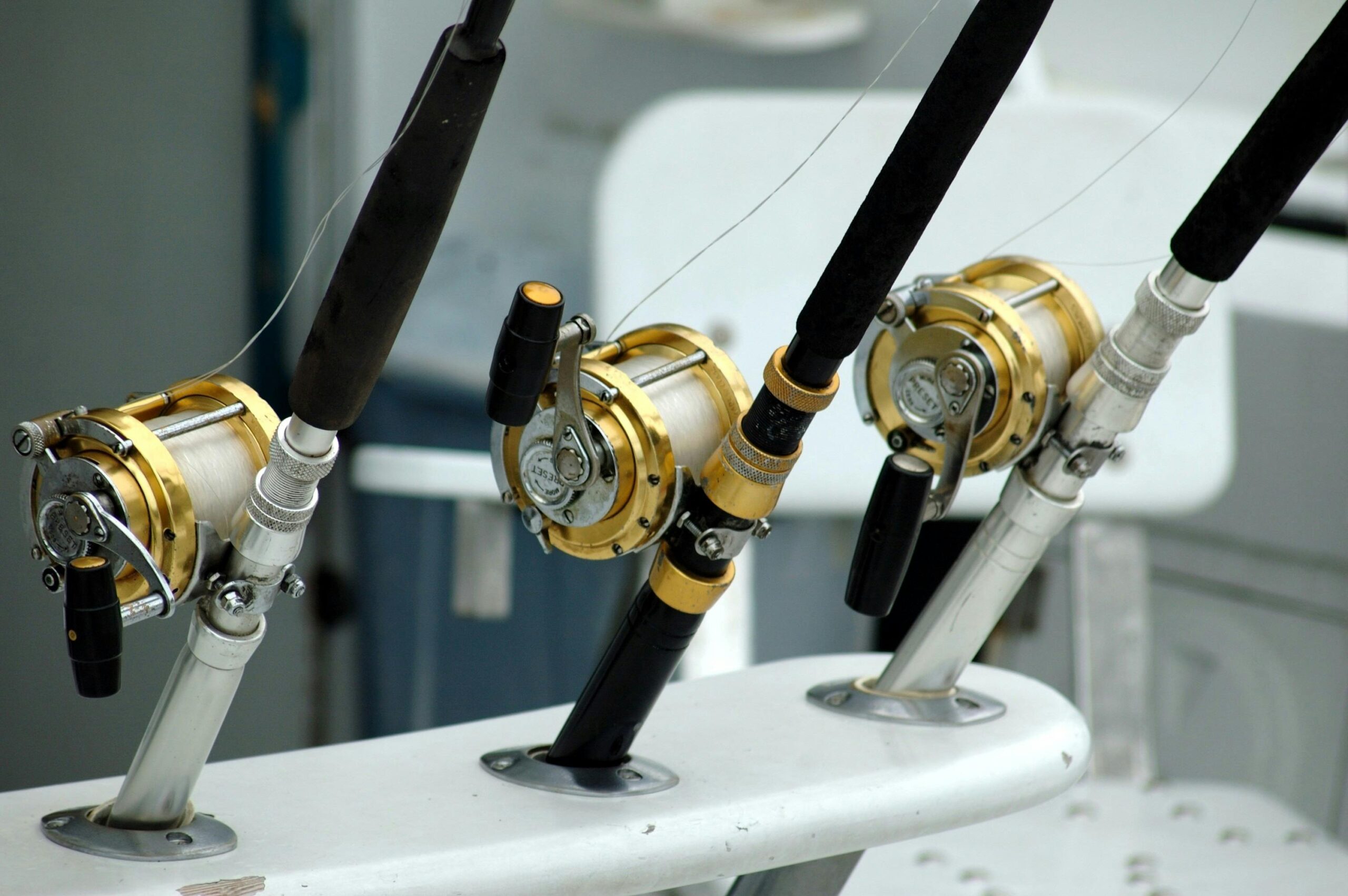How to Use a Fishing Reel with No Anti-Reverse Trigger
Introduction
When you recently acquired a spinning reel and discovered that it lacked an anti-reverse switch, there is nothing unusual about it, and you are not alone. This is no longer part of many modern reels, and there is a good reason why.
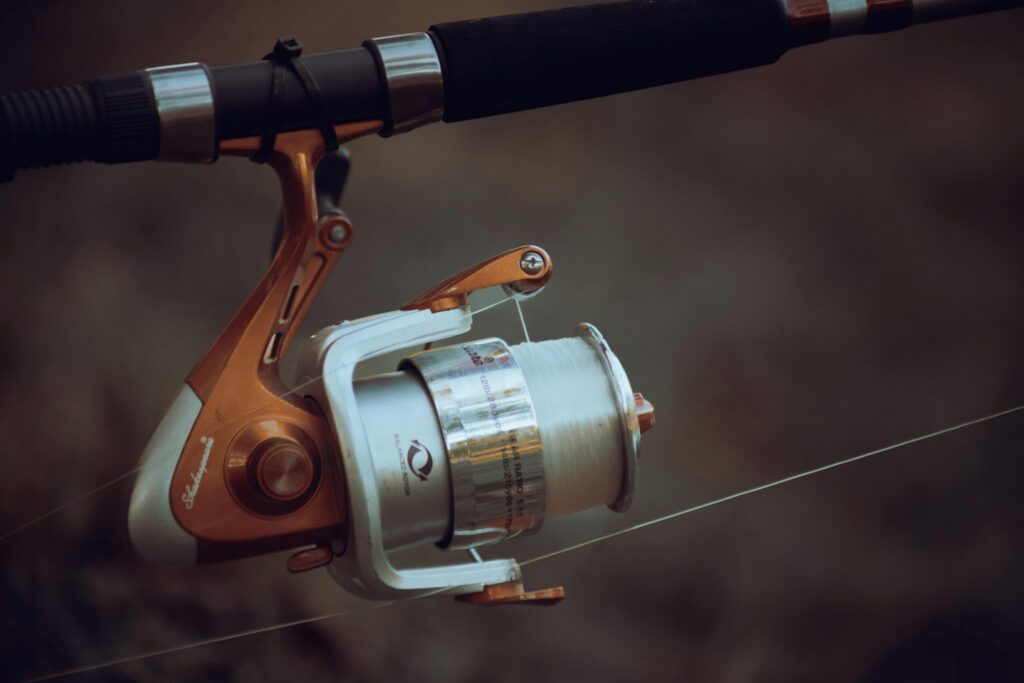
Today, compared to using a switch to ensure your handle spins forward, more complex drag systems have been incorporated into your reels, which are more effective and consistent in carrying out their duties. That implies fewer moving components, fewer chances of failures and an overall easier fishing experience.
But what about the one who is used to back-reeling or is unsure how to manage a reel with the additional trigger otherwise? No worries. This guide provides everything you need to know to use a fishing reel without an anti-reverse mechanism with confidence and success.
Why Some Reels Don’t Have Anti-Reverse Anymore
Back then, anti-reverse was a standard feature. You could reach across, flip the tiny switch, and the reel handle would lock; then, it could not coast backward during a fight. That was what gave you the control, and with a heavy fish, you have the advantage.
But times have changed.
The switch has been phased out by modern reel manufacturers (sometimes called by their trade names, such as Shimano, Daiwa, and PENN).
- Minimize complications of the first order
- No unnecessary points of failure
And when the drag system takes a load, Make the most of it.
Consider it like this: the anti-reverse was like a net. Today, the drag is the net -and it is more powerful, more polished, and it never stops.
What Is Anti-Reverse & Why It Was Used
Anti-Reverse: It is a property that stops the reel handle of your reel from turning against it.
Why It Was Used: so that anglers did not have to deal with slack, they were able to tame fish pressure, and they could fight fish with the application of back-reeling.
Why It Sucks: It is outdated because nowadays, drag systems are more up-to-date. They safeguard your line and rod more conscientiously than was ever done by manual back-reeling.
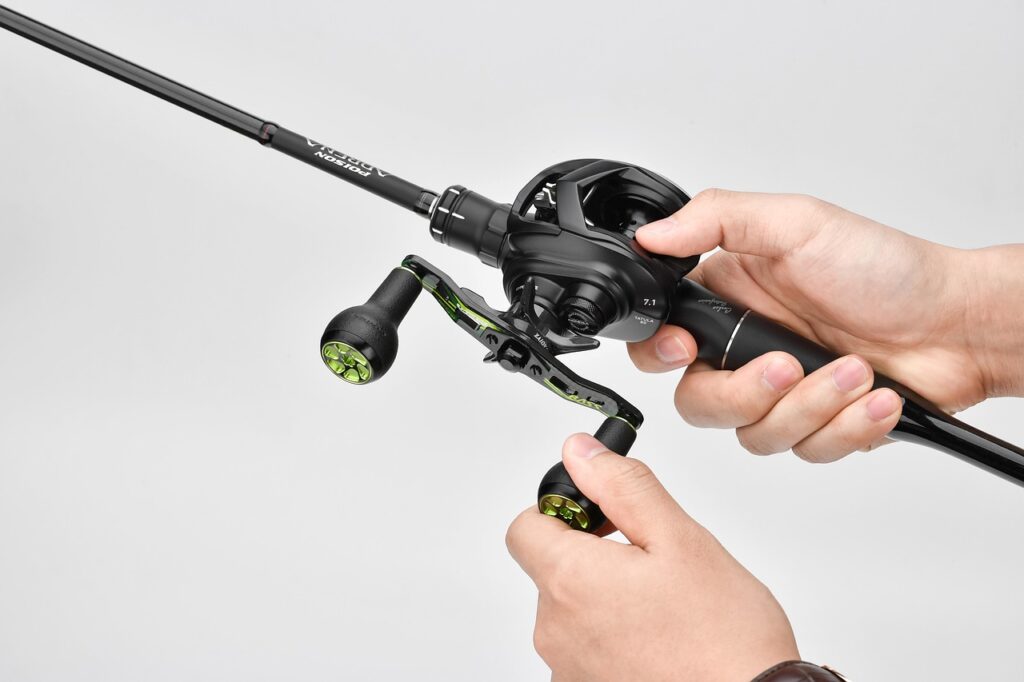
How to Use a Fishing Reel With No Anti-Reverse Trigger
Step 1: Set Your Drag Correctly
Have your drag adjusted to 25 30 percent breaking strain of your line
As an example, when fishing 10 lb line, you would have set drag to slip at about 2.5 3 lbs of pull
When you pull the line, you ought to experience falling out of it easily.
Pro Tip: Get the hang of setting drag at home by hand-pulling the line, clicking, and adjusting so that it slips under pressure yet remains snug.
Step 2: Fight the Fish with Forward Reeling Only
There is no back head to crank and no handle rollback.
Have your rod tip high up and exert consistent pressure
When the fish pulls, let the drag take its courses
Pause it: reel forward in control
Open up the reel. Later, do not tussle with the gear — play with the drag.
Step 3: Open the Bail for Line Control
Do you have to cast out more lines when putting a lure in a different position or when a run is very strong?
Just:
- Turn the bail arm, overexposing the bail arm pins
- Go ahead and drop the line out
- The bail that is to be retrieved is the one which is closed.
- Do not attempt to press or grasp the spool with your palm or to reel behind you; such practices are outdated.
Step 4: Control Tension with Finger Pressure
When you have gotten used to it:
Press just lightly with a finger index against the spool edge
This provides you with a small manual pull when drag-releasing
Aids in the tuning of pressure during difficult fights
Please don’t make it too tight, though you are aiming at control and not breaking a line.
Step 5: Practice on Calm Water First
Practice using:
Small hook-baits
Light drag –
Familiarise yourself with the natural drag characteristics of your reel. It will take only a couple of casts and reels before you forget about the backdrift, even.
5 Quick Steps to Use a Fishing Reel Without Anti-Reverse
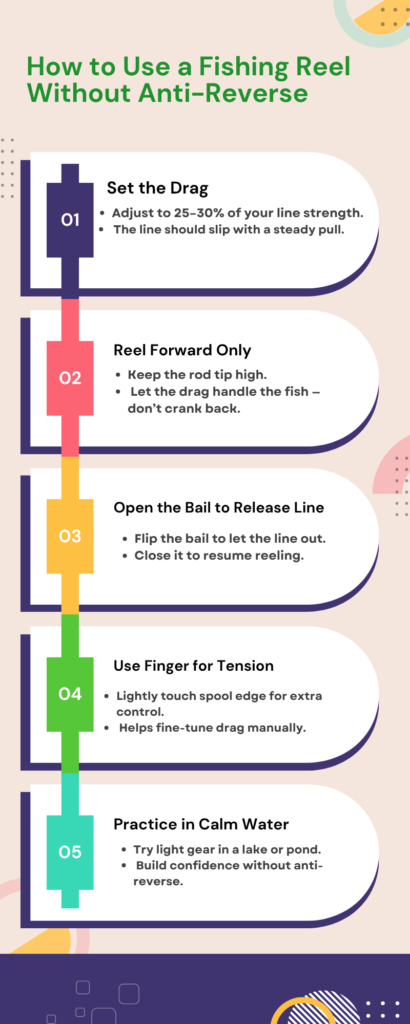
Real Angler Wisdom
Anglers across forums like “Bass Resource” and “Reddit” agree:
“That’s what your drag is for, buddy.”
“Backwards reeling is old-school. Smooth drag does it better.”
“I haven’t used an anti-reverse switch in years. Don’t miss it one bit.”
These are guys with real fishing time behind them—and they’ve learned to trust the drag.
When You Might Miss the Anti-Reverse
- If you’re used to back-reeling to reposition lures
- If you like old-school control during finesse fishing
- Or you just don’t trust drag systems yet
Should You Upgrade to a Reel With Anti-Reverse?
If your fishing style demands constant manual control and you love that old-school feel — maybe find a reel with anti-reverse.
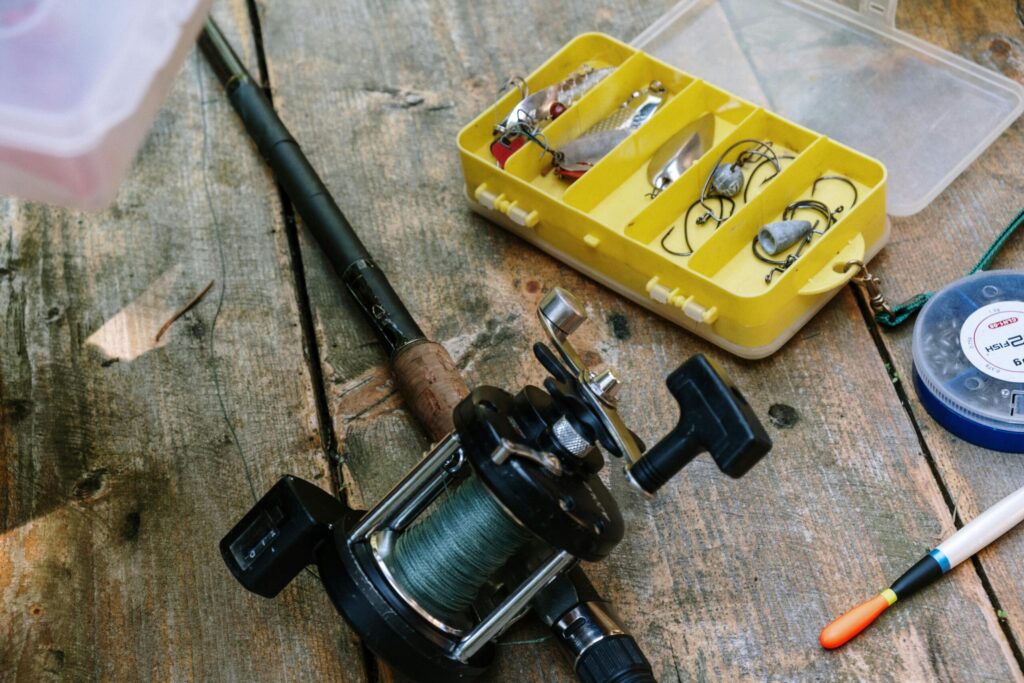
Otherwise, stick with newer models — they’re simpler, lighter, and more reliable.
Check out our Best Spinning Reels guide to see top models with and without the switch — all tested and reviewed based on real use.
Conclusion
Anti-reverse reels are not a step in the wrong direction; it is an evolution of better gear. As soon as you learn how to use drag, manage your bail, and maintain control of your hand, you will never forget such a switch anymore.
And then allow yourself a couple of casts, two solid fights, and you will not fail to be aware that:
“That anti-reverse trigger was just training wheels.”
Now you’re ready to fish like the pros — simple, smooth, and confident.

